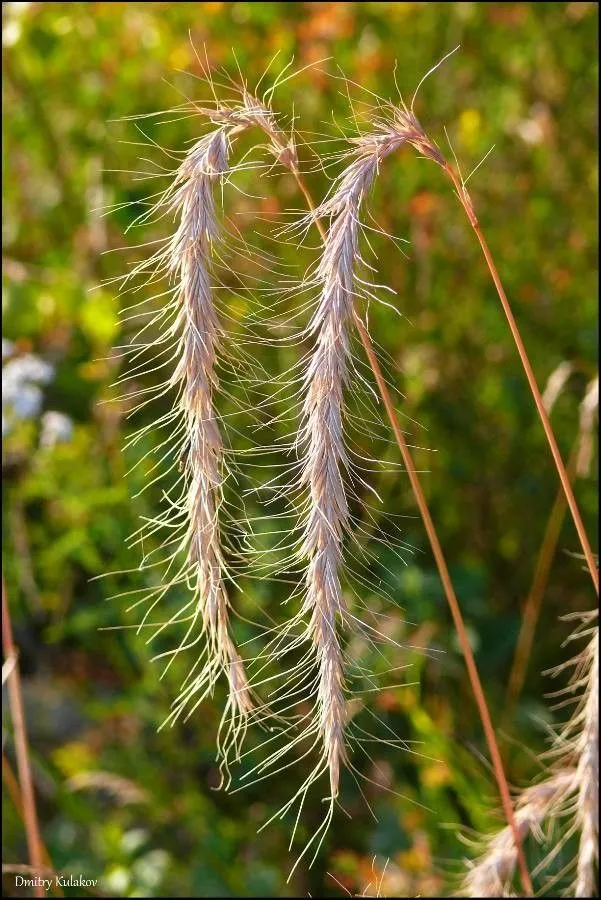
Author: L.
Bibliography: Sp. Pl.: 83 (1753)
Year: 1753
Status: accepted
Rank: species
Genus: Elymus
Vegetable: False
Observations: E. Europe to N. & C. Japan, Alaska to W. Canada
Siberian wild rye, scientifically named Elymus sibiricus, is a perennial grass that belongs to the Poaceae family. This robust and versatile plant was first described in the authoritative botanical work “Species Plantarum” published in 1753 by the renowned botanist Carl Linnaeus.
Elymus sibiricus thrives across several regions, marking its presence from Eastern Europe through Northern and Central Japan, and extending its range from Alaska to Western Canada. This broad geographical distribution underscores its adaptability to various climatic conditions and soil types, making it an important species in the ecosystems where it is found.
With its resilient nature, Siberian wild rye is frequently employed for purposes such as soil stabilization, particularly in areas prone to erosion. Its ability to grow in diverse environments, including cold and harsh climates, contributes to its effectiveness in these roles. Moreover, it offers ecological benefits by serving as forage for wildlife and livestock, adding an essential layer to the food chain in its native habitats.
The plant’s aesthetic and functional characteristics make it noteworthy within the Poaceae family. Its tall, tufted growth with long, slender leaves creates a distinctive appearance that also provides shelter and sustenance for various animals. Additionally, Elymus sibiricus plays a role in traditional practices and natural landscaping, appreciated for both its ecological value and its contribution to biodiversity.
Overall, Siberian wild rye stands out as a remarkable species due to its extensive range, ecological benefits, and historical botanical significance. This grass not only supports natural habitats but also aids in land reclamation and agricultural practices, showcasing its enduring resilience and importance in the plant kingdom.
Eng: siberian wild rye, siberian wildrye
Lit: sibirinis elimas
Dan: sibirisk hundekvik
Lav: sibīrijas ciņuv
Est: siberi orashein
Swe: sibir-elm, sibirisk elm
Fra: élyme de sibérie
En: Siberian wild rye, Siberian wildrye
Da: Sibirisk hundekvik
Et: Siberi orashein
Fi: Taigavehnä
Fr: Élyme de Sibérie
Lv: Sibīrijas ciņuv
Lt: Sibirinis elimas
Sv: Sibir-elm, Sibirisk elm
Taken Nov 8, 2019 by Kulakov Dmitry (cc-by-sa)
© copyright of the Board of Trustees of the Royal Botanic Gardens, Kew.
© copyright of the Board of Trustees of the Royal Botanic Gardens, Kew.
© copyright of the Board of Trustees of the Royal Botanic Gardens, Kew.
Growth form>: Bunch
Growth habit>: Graminoid
Growth rate>: Moderate
Ph maximum: 7.2
Ph minimum: 5.0
Family: Myrtaceae Author: (F.Muell.) K.D.Hill & L.A.S.Johnson Bibliography: Telopea 6: 402 (1995) Year: 1995 Status:…
Family: Rubiaceae Author: Pierre ex A.Froehner Bibliography: Notizbl. Bot. Gart. Berlin-Dahlem 1: 237 (1897) Year:…
Family: Sapindaceae Author: Koidz. Bibliography: J. Coll. Sci. Imp. Univ. Tokyo 32(1): 38 (1911) Year:…
Family: Asteraceae Author: A.Gray Bibliography: Pacif. Railr. Rep.: 107 (1857) Year: 1857 Status: accepted Rank:…
Family: Fabaceae Author: Medik. Bibliography: Vorles. Churpfälz. Phys.-Ökon. Ges. 2: 398 (1787) Year: 1787 Status:…
Family: Aspleniaceae Author: (Cav.) Alston Bibliography: Bull. Misc. Inform. Kew 1932: 309 (1932) Year: 1932…